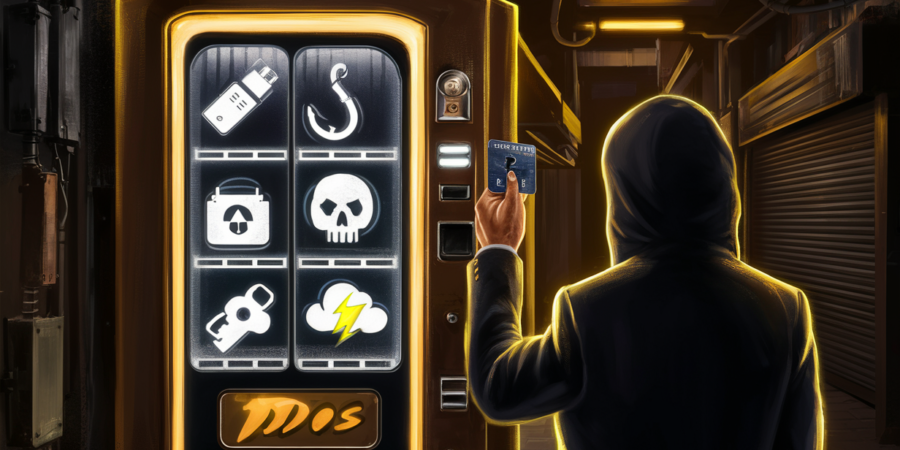Introduction: Cybercrime Is No Longer Just a Hacker’s Game
In the early days of the internet, cyberattacks were executed by skilled individuals who spent years mastering code, systems, and exploit techniques. Fast forward to today, and we are witnessing the commercialization of cybercrime at a level never seen before. The digital underground has evolved into a service-based economy, and at the heart of this transformation is Cybercrime-as-a-Service (CaaS).
This isn’t just a buzzword. It’s a serious threat that is making dangerous cyber tools easily accessible to anyone with a motive and a modest budget. Whether you’re a student, a working professional, a parent, or a business owner, the CaaS ecosystem is now something you must understand — not out of curiosity, but out of necessity.
What is Cybercrime-as-a-Service (CaaS)?
Cybercrime-as-a-Service, or CaaS, refers to a business model in which cybercriminals develop and sell their expertise, tools, and digital attack services to clients, many of whom lack any technical background. These services are rented or purchased much like legal software or IT services.
The concept is simple but dangerous: why learn to hack when you can simply pay someone to do it for you?
Through CaaS platforms, even an unskilled individual can launch ransomware campaigns, conduct phishing attacks, or buy access to compromised systems; all without ever writing a single line of code.
This shift from skill-based crime to service-based crime has led to an explosion in the number, scale, and complexity of cyberattacks around the world.
How Does CaaS Actually Operate?
CaaS mimics legitimate online business models. Think of how cloud-based services like Netflix or Microsoft 365 allow users to access tools without owning the infrastructure. Similarly, CaaS platforms offer:
- Pre-configured ransomware kits with easy-to-use control panels.
- Subscription-based malware toolkits complete with dashboards.
- Access to infected systems, stolen credentials, or network backdoors.
- On-demand distributed denial-of-service (DDoS) attacks for hire.
- Detailed video tutorials and customer support, often in multiple languages.
Buyers typically discover these services through dark web marketplaces, private forums, or encrypted messaging platforms such as Telegram. The transactions are often carried out using anonymous cryptocurrencies like Monero or Bitcoin.
Types of Services Offered Under CaaS
- Ransomware-as-a-Service (RaaS): Developers create sophisticated ransomware variants and offer them to affiliates who deploy them in exchange for a share of the ransom payments.
- Phishing-as-a-Service (PhaaS): Ready-made phishing kits with templates targeting banks, e-commerce platforms, and government portals.
- Malware-as-a-Service: Rentable tools to steal banking information, spy on users, log keystrokes, or infect devices silently.
- Access-as-a-Service: Black-market vendors sell login credentials or remote access to compromised networks.
- DDoS-as-a-Service: Powerful botnets are rented out to overload and crash websites.
- Fraud-as-a-Service: Identity theft tools, counterfeit documents, and money laundering schemes packaged as services.
Each of these services is maintained and improved regularly, with version updates, user support, and detailed usage instructions — just like any SaaS product.
Why is CaaS Spreading So Rapidly?
- Low Entry Barrier: Anyone with internet access and basic knowledge can rent attack tools without needing technical skills.
- High Financial Returns: Attackers can earn significant money quickly.
- Anonymity of the Dark Web: Encrypted platforms and anonymous cryptocurrencies make it difficult to trace sellers and buyers.
- Global Demand: As more people go online, the potential targets increase exponentially.
- Scalability: Like a startup, CaaS providers can serve clients worldwide.
Real-World Impact: Case Study of a Low-Skill Attacker
In late 2023, a 17-year-old student from Eastern Europe was arrested after launching a ransomware attack on a chain of dental clinics using a CaaS platform. With only $50 in cryptocurrency and no prior technical skills, he disrupted medical operations and caused severe financial losses — using services bought entirely online.
The Dark Web Marketplace Behind CaaS
- Dark Web Forums: Invite-only communities.
- Onion Websites: Hidden sites via the Tor network.
- Telegram/Discord Groups: Encrypted platforms for trading tools.
- Automated Marketplaces: E-commerce-style dark web sites with filters, reviews, and buyer protections.
Why Students and Digital Natives Must Pay Attention
Students, freelancers, and young professionals are top targets. They reuse passwords, rely on insecure Wi-Fi, and may unknowingly become part of cybercrime operations. Digital literacy must include cybersecurity awareness.
How to Stay Protected in a World Powered by CaaS
- Enable Multi-Factor Authentication (MFA).
- Use a VPN on public networks.
- Keep systems updated with security patches.
- Avoid suspicious links and files.
- Use unique, strong passwords.
- Monitor financial accounts regularly.
The Future of Cybercrime-as-a-Service
Expect AI-generated phishing, deepfake scams, and adaptive malware. CaaS will only become more efficient and difficult to detect. Staying informed is key to staying protected.
Conclusion: Cybersense Stands Against CaaS with Awareness and Action
Cybercrime-as-a-Service is a global threat. CyberSense helps students, families, and professionals become informed digital citizens ready to defend against CaaS-driven attacks.
We believe the best firewall is a well-informed mind.
Want to Stay Ahead of Cybercriminals?
CyberSense offers customized awareness programs, simulation-based learning, and expert-led sessions to help you understand and defend against modern threats like CaaS.
Visit Cybersense : Website | Instagram | LinkedIn | Facebook

